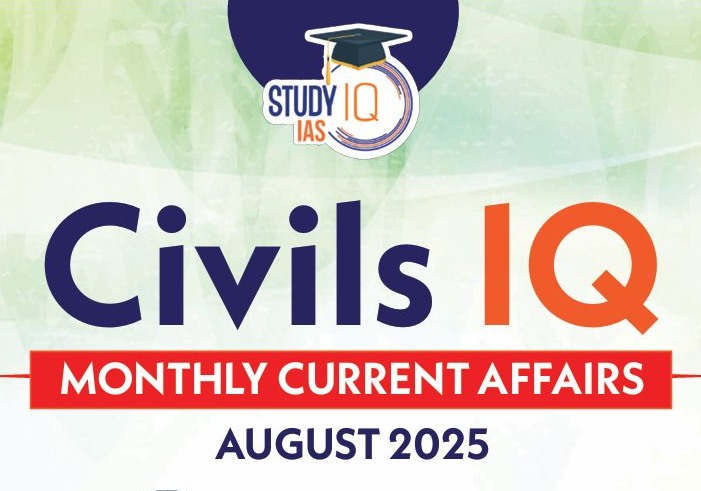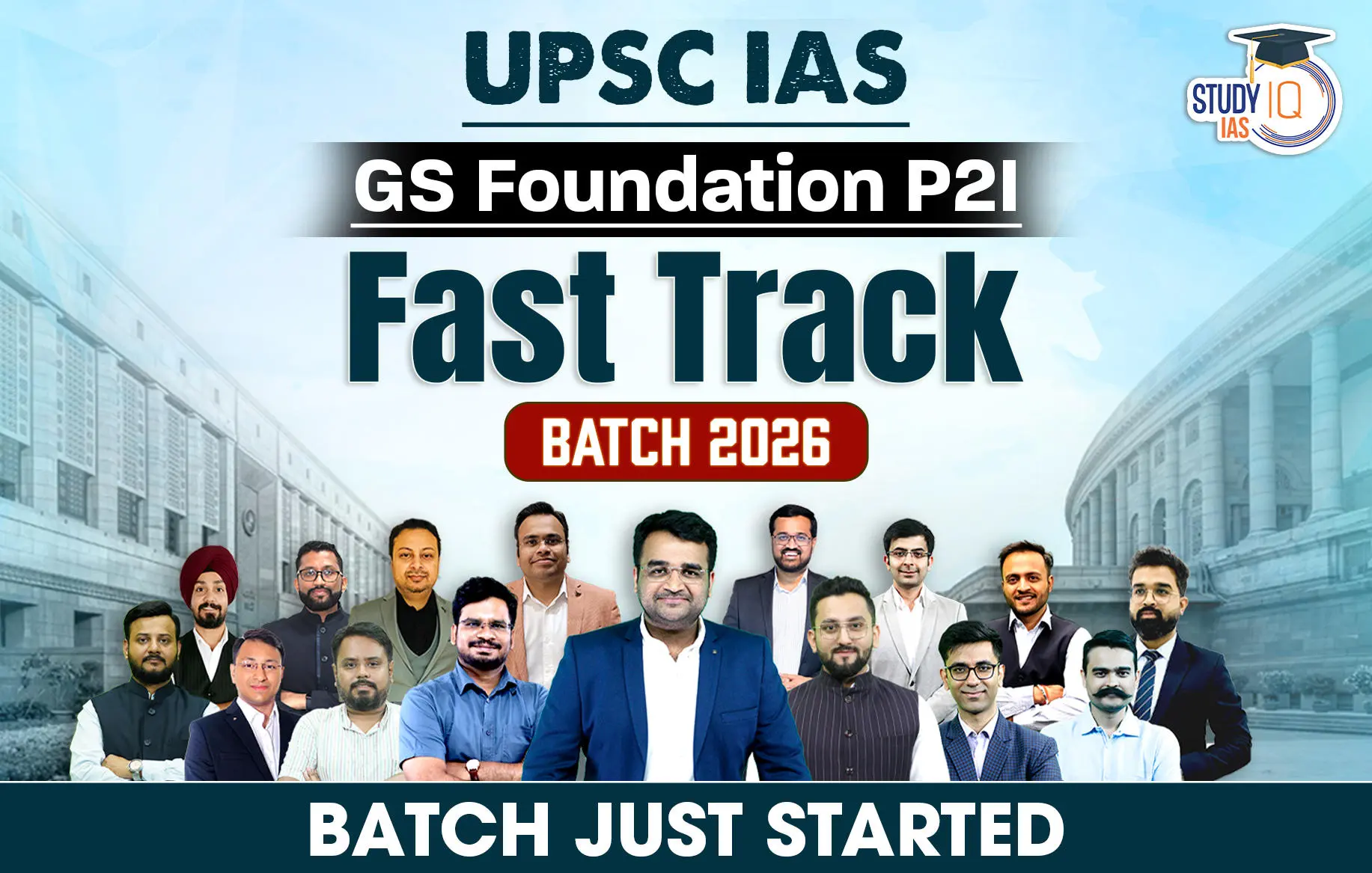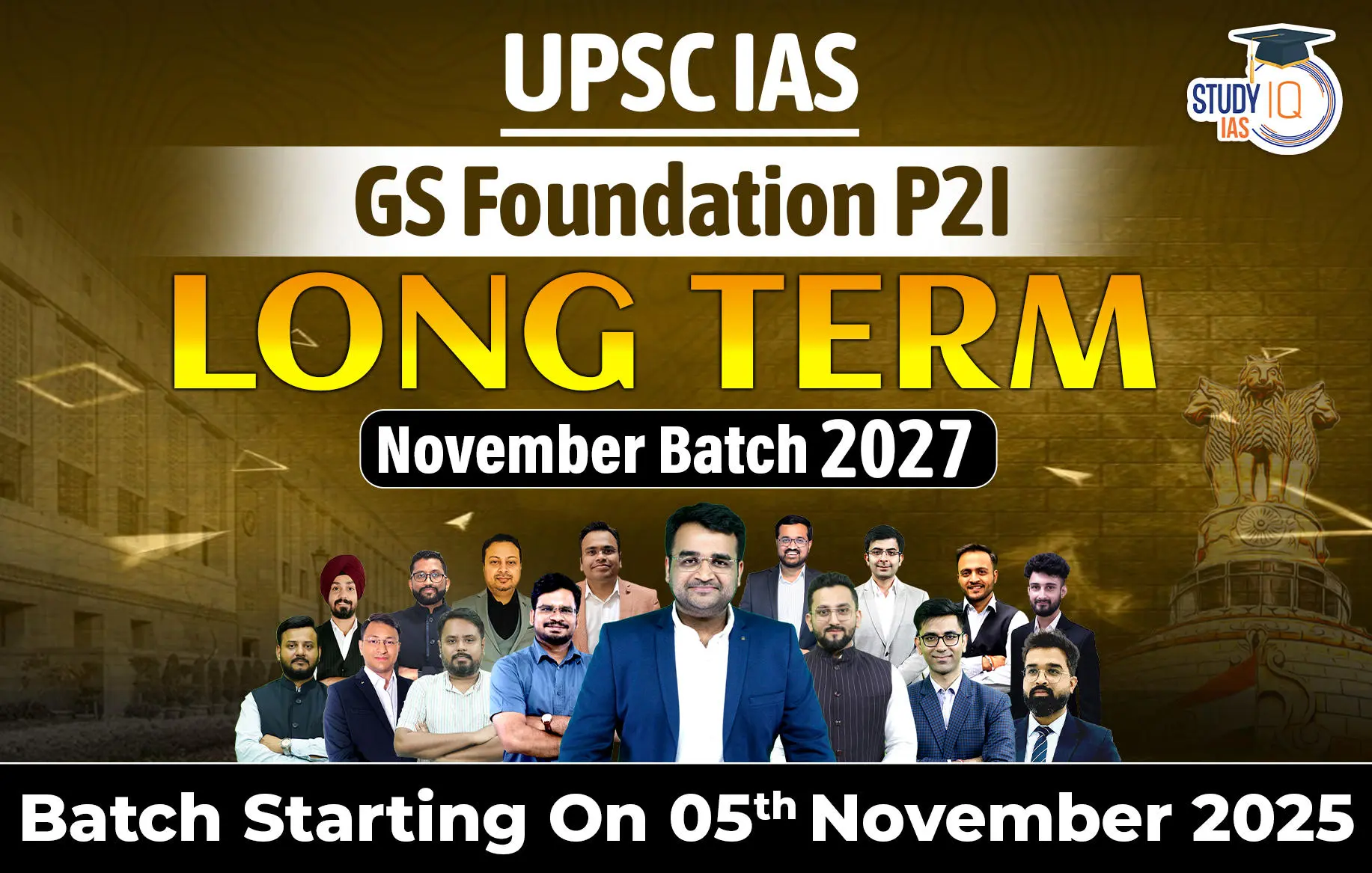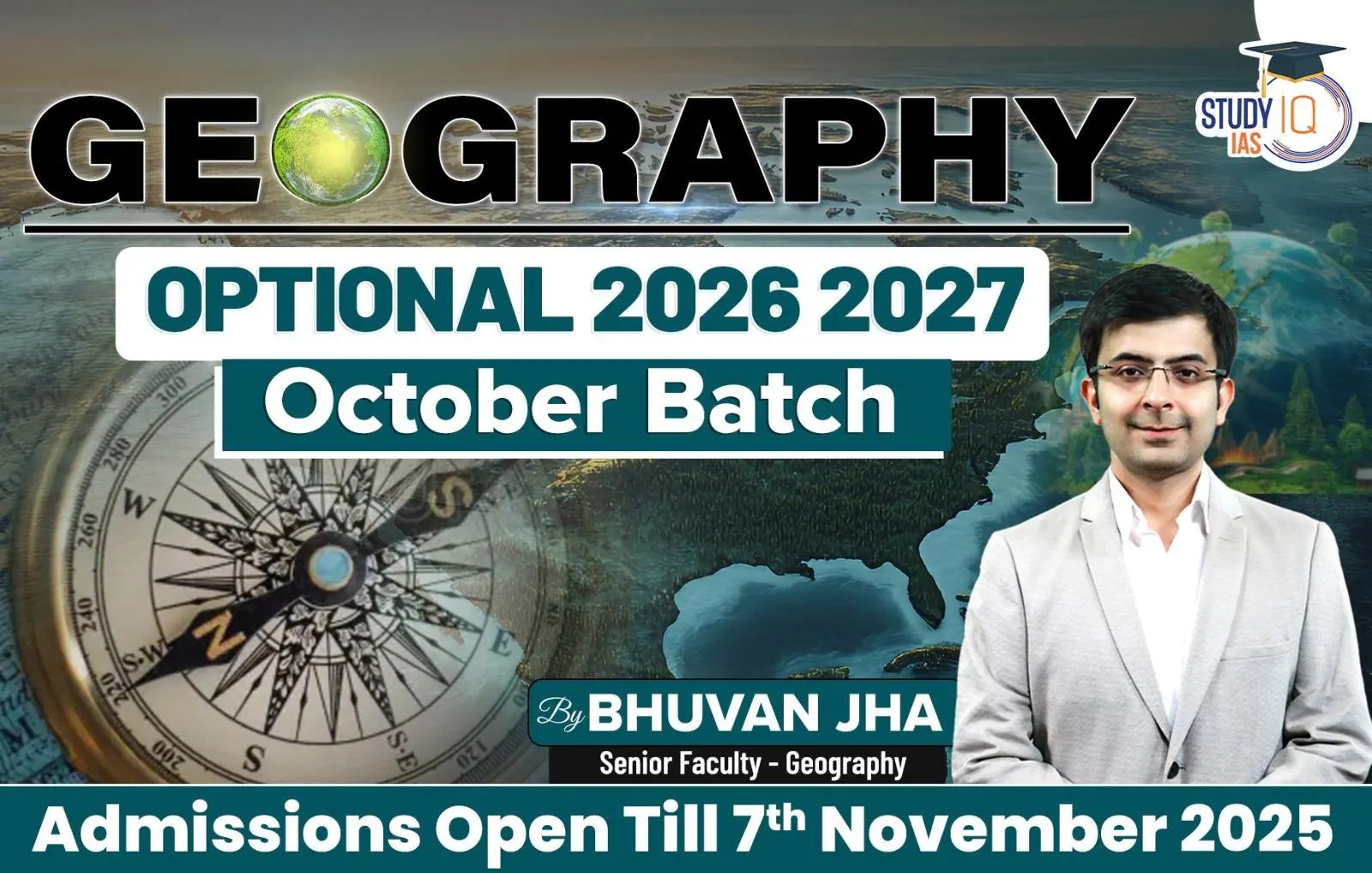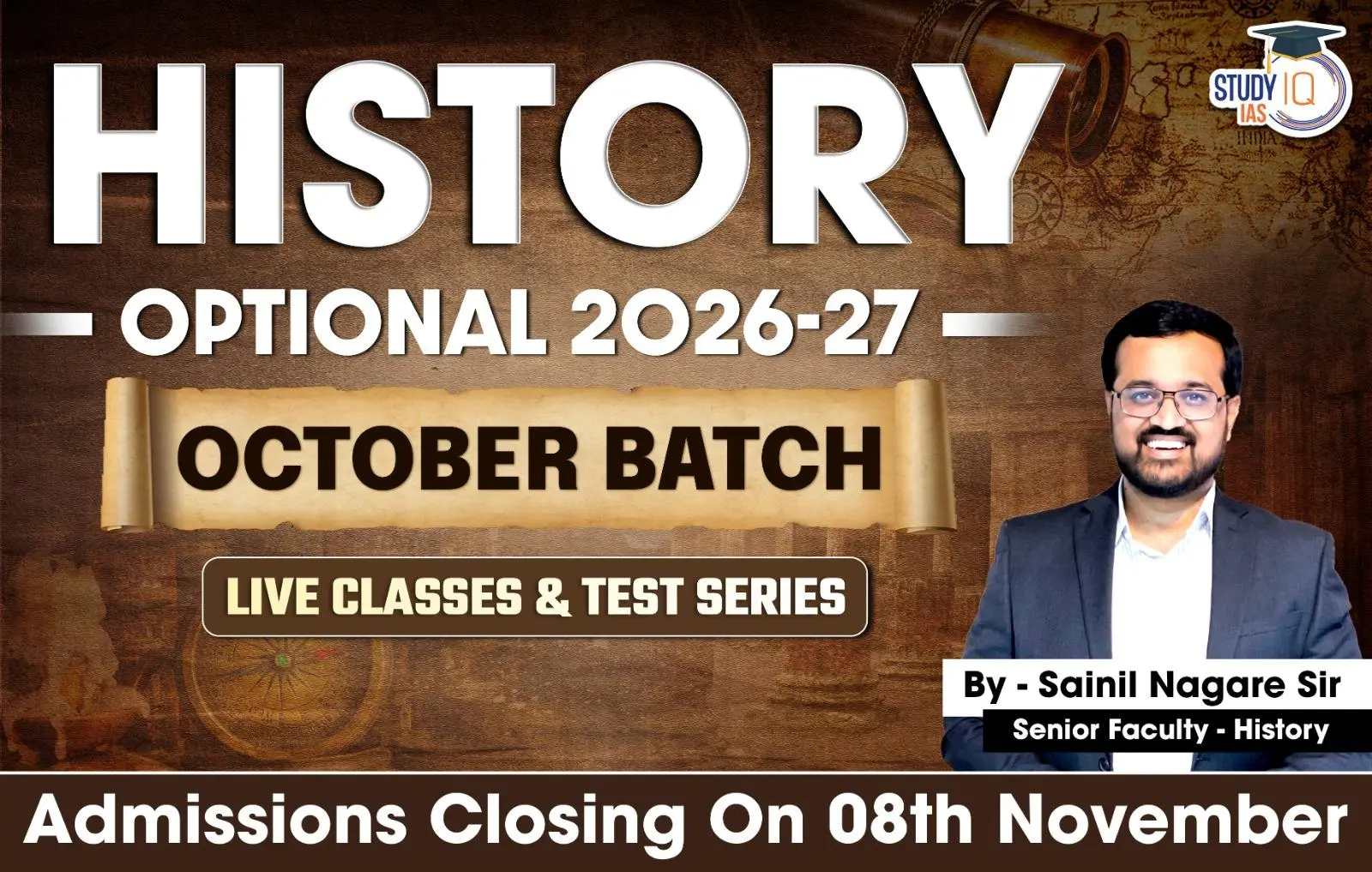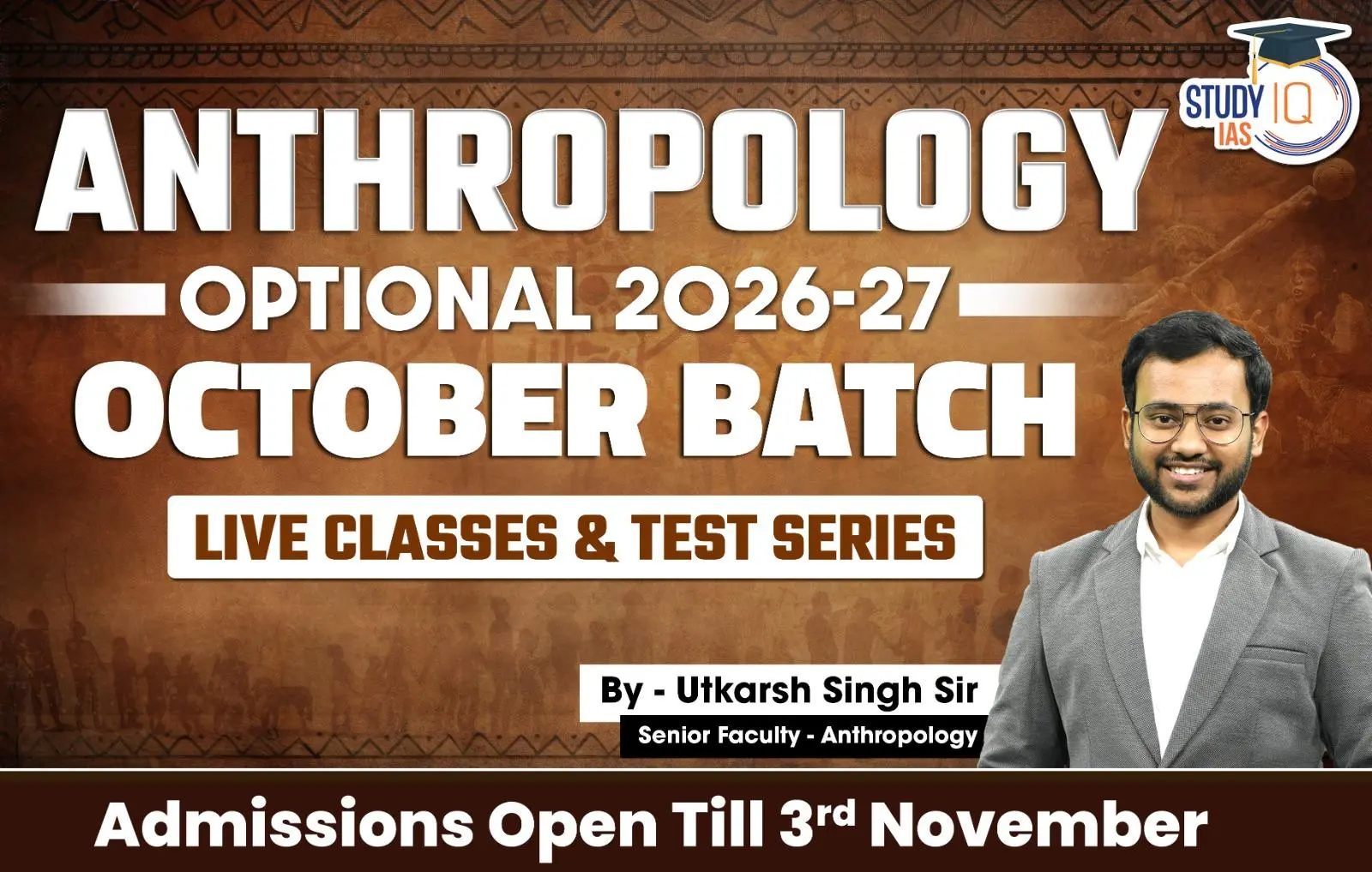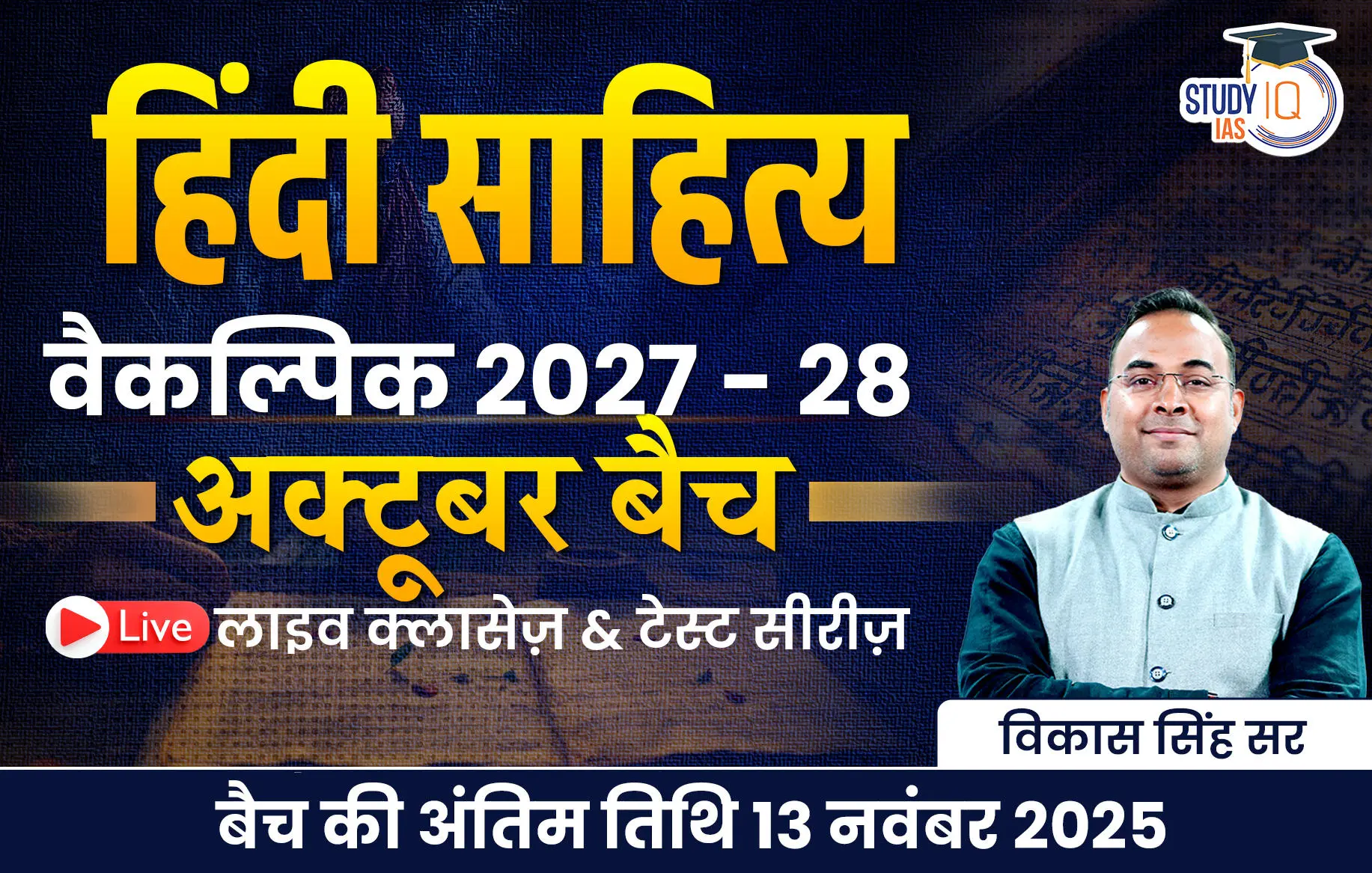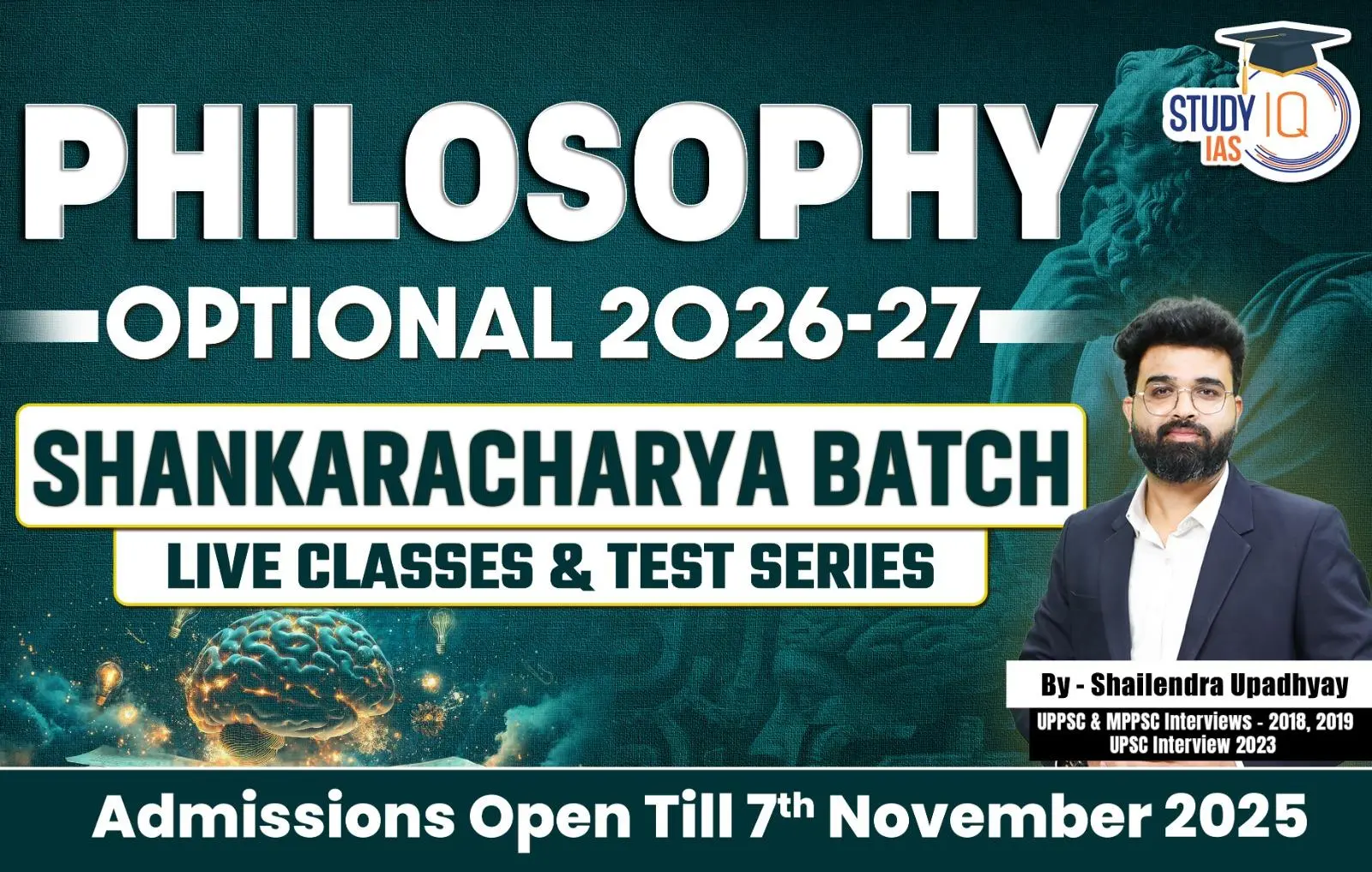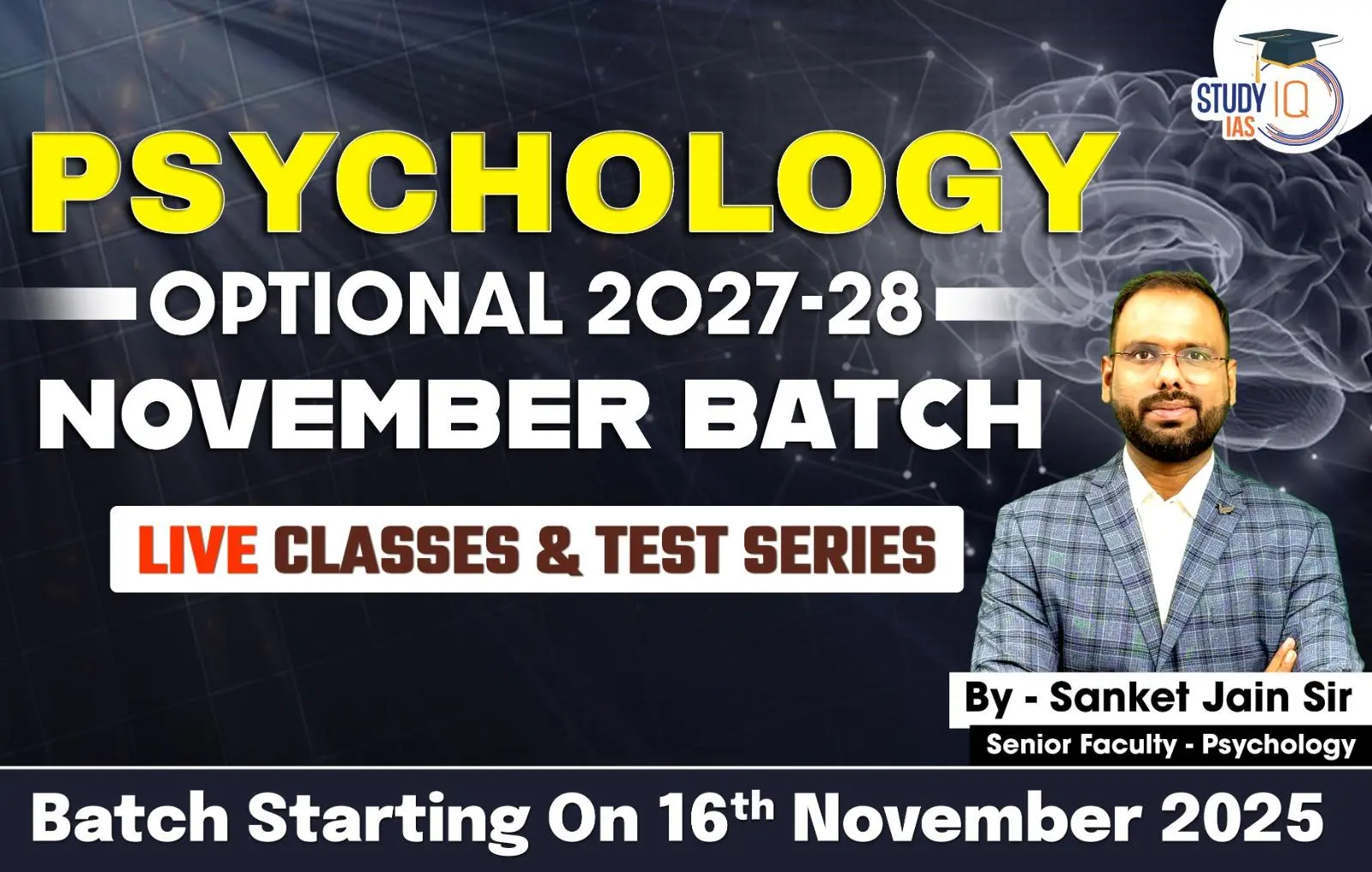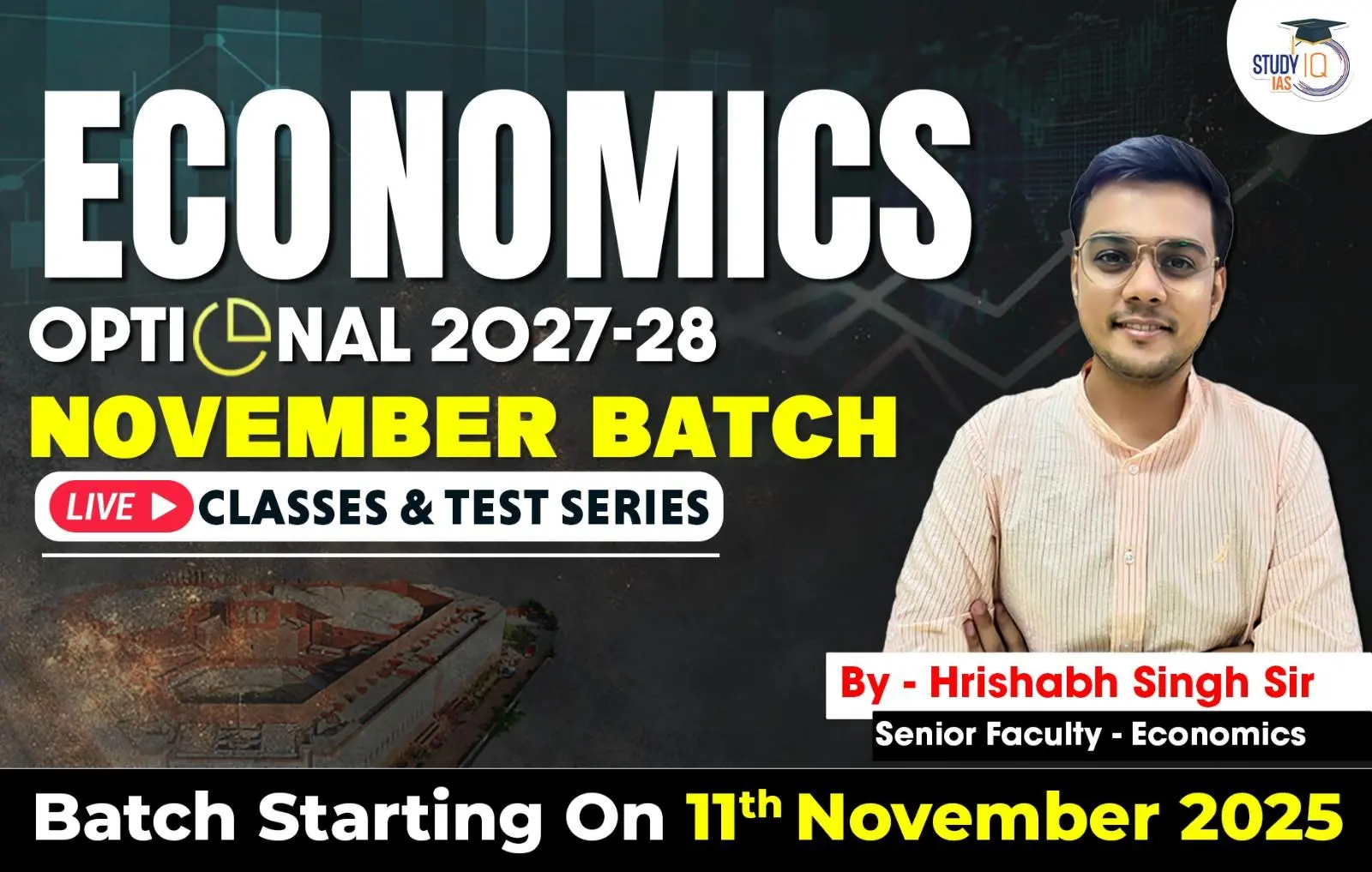Daily Quiz 29 July 2025
Quiz-summary
0 of 5 questions completed
Questions:
- 1
- 2
- 3
- 4
- 5
Information
- Click on – ‘Start Quiz’ button
- Solve Questions
- Click on ‘Next’ button
- Click on ‘Finish Quiz’ button
- Now click on ‘View Questions’ button – here you will see solutions and links.
- The test contains a total of 5 questions.
- Click on the most appropriate option to mark it as your answer.
- You will be awarded Two marks for each correct answer.
- You can change your answer by clicking on some other option.
- A Number list of all questions appears at the top side of the screen.
- You can access the questions in any order by clicking on the question number given on the number list.
- You can use rough sheets while taking the test.
- Do not use calculators, log tables, dictionaries, or any other printed/online reference material during the test.
- Do not click the button “Finish Quiz” before completing the test. A test once submitted cannot be resumed.
You have already completed the quiz before. Hence you can not start it again.
Quiz is loading...
You must sign in or sign up to start the quiz.
You have to finish following quiz, to start this quiz:
- 1
- 2
- 3
- 4
- 5
- Answered
- Review
-
Question 1 of 5
1. Question
1 pointsSenegal was recently in news. Consider the following statements about it:
1. Senegal borders Algeria and Libya.
2. The Gambia almost entirely cuts through Senegal along a river.
3. Dakar, its capital, is located near the Atlantic Ocean.
Which of the statements given above is/are correct?Correct
Answer: C
Explanation:
- Statement 1 is Incorrect:
Senegal is in West Africa, and its neighbouring countries are Mauritania (north), Mali (east), Guinea (southeast), Guinea-Bissau (south), and The Gambia (which cuts through it). Algeria and Libya are in North Africa and do not share borders with Senegal. - Statement 2 – Correct:
The Gambia, a narrow nation along the Gambia River, cuts through Senegal from the Atlantic coast inward, making Senegal surround The Gambia on three sides. This is a unique geographical feature.
Statement 3 – Correct:
Dakar, the capital and largest city of Senegal, is located on the Cape Verde Peninsula, projecting into the Atlantic Ocean, making it one of the westernmost cities of Africa.Incorrect
Answer: C
Explanation:
- Statement 1 is Incorrect:
Senegal is in West Africa, and its neighbouring countries are Mauritania (north), Mali (east), Guinea (southeast), Guinea-Bissau (south), and The Gambia (which cuts through it). Algeria and Libya are in North Africa and do not share borders with Senegal. - Statement 2 – Correct:
The Gambia, a narrow nation along the Gambia River, cuts through Senegal from the Atlantic coast inward, making Senegal surround The Gambia on three sides. This is a unique geographical feature.
Statement 3 – Correct:
Dakar, the capital and largest city of Senegal, is located on the Cape Verde Peninsula, projecting into the Atlantic Ocean, making it one of the westernmost cities of Africa. -
Question 2 of 5
2. Question
1 pointsConsider the following statements:
Statement I: Improving soil health is essential not only for agricultural productivity but also for enhancing India’s nutritional security and public health outcomes.
Statement II: Soil nutrient deficiencies, including low organic carbon and micronutrients like zinc and boron, contribute to hidden hunger and poor child development.
Statement III: Soil degradation has no significant impact on food quality or the broader public health profile of a country.
Which one of the following is correct in respect of the above statements?
Correct
Answer: (c)
Explanation:
- Statement I makes the link between soil health and national nutrition security — a key theme in Indian agricultural reform.
- Statement II is correct — widespread micronutrient deficiencies (zinc, iron, boron) in soils lead to low-nutrition crops, which cause stunting and cognitive issues in children. It directly explains the public health importance mentioned in Statement I.
Statement III is incorrect — numerous studies and public health policies recognize the critical role of soil in determining food quality, nutrient intake, and disease burden.
Thus, only Statement II is correct and it explains Statement I.Incorrect
Answer: (c)
Explanation:
- Statement I makes the link between soil health and national nutrition security — a key theme in Indian agricultural reform.
- Statement II is correct — widespread micronutrient deficiencies (zinc, iron, boron) in soils lead to low-nutrition crops, which cause stunting and cognitive issues in children. It directly explains the public health importance mentioned in Statement I.
Statement III is incorrect — numerous studies and public health policies recognize the critical role of soil in determining food quality, nutrient intake, and disease burden.
Thus, only Statement II is correct and it explains Statement I. -
Question 3 of 5
3. Question
1 pointsWith reference to the PM-VIKAS (PradhanMantriVirasatKaSamvardhan) scheme, consider the following statements:
- It is a centrally sponsored scheme aimed at uplifting tribal communities.
- It integrates multiple earlier schemes such as SeekhoaurKamao and NaiRoshni.
- One of its objectives is to develop “Vishwakarma Villages” for tourism and commerce.
How many of the statements given above are correct?
Correct
Answer: B
Explanation:
- Statement 1 — Incorrect:
PM-VIKAS is a Central Sector Scheme, meaning it is 100% funded and implemented by the Central Government, unlike Centrally Sponsored Schemes which involve cost-sharing with states.
It targets minority communities, particularly focusing on artisans, craftsmen, and traditional skills. It is not designed specifically for tribal communities, although some tribal members may benefit indirectly if they belong to the minority groups identified. - Statement 2 — Correct:
The scheme integrates and revamps five existing schemes under the Ministry of Minority Affairs:- SeekhoaurKamao (Skill development)
- USTTAD (Upgrading Skills and Training in Traditional Arts/Crafts)
- HamariDharohar (Preservation of heritage)
- NaiManzil (Educational and livelihood development)
- NaiRoshni (Leadership development for minority women)
Statement 3 — Correct:
The scheme envisions “Vishwakarma Villages” as clusters where artisans and craftspeople live and work. These will be developed as tourism and commercial hubs, using a hub-and-spoke model to improve access to markets, credit, training, and technology.Incorrect
Answer: B
Explanation:
- Statement 1 — Incorrect:
PM-VIKAS is a Central Sector Scheme, meaning it is 100% funded and implemented by the Central Government, unlike Centrally Sponsored Schemes which involve cost-sharing with states.
It targets minority communities, particularly focusing on artisans, craftsmen, and traditional skills. It is not designed specifically for tribal communities, although some tribal members may benefit indirectly if they belong to the minority groups identified. - Statement 2 — Correct:
The scheme integrates and revamps five existing schemes under the Ministry of Minority Affairs:- SeekhoaurKamao (Skill development)
- USTTAD (Upgrading Skills and Training in Traditional Arts/Crafts)
- HamariDharohar (Preservation of heritage)
- NaiManzil (Educational and livelihood development)
- NaiRoshni (Leadership development for minority women)
Statement 3 — Correct:
The scheme envisions “Vishwakarma Villages” as clusters where artisans and craftspeople live and work. These will be developed as tourism and commercial hubs, using a hub-and-spoke model to improve access to markets, credit, training, and technology. -
Question 4 of 5
4. Question
1 pointsConsider the following statements regarding Green Hydrogen production from bio-waste as recently developed at IISc Bengaluru:
- The process is carbon-neutral, meaning it neither adds nor removes carbon dioxide from the environment.
- It involves gasification of biomass followed by water-gas shift reaction and hydrogen purification.
- It aligns with the National Green Hydrogen Mission targets for clean energy and emission reductions.
Which of the statements given above is/are correct?
Correct
Answer: A
Explanation:
- Statement 1 — Incorrect:
The method developed by IISc is carbon-negative, not carbon-neutral. This means it removes more CO₂ from the environment than it emits.
The process involves capturing the CO₂ released during biomass gasification and converting the carbon-rich residues into biochar, which is stored in soil, effectively sequestering carbon. - Statement 2 — Correct:
The process consists of:- Biomass gasification: Converts organic waste into syngas (CO + H₂)
- Water-gas shift reaction: Converts CO into CO₂ and H₂
- Hydrogen purification: Uses advanced membrane or pressure swing adsorption (PSA) methods
- Statement 3 — Correct:
This innovation supports the National Green Hydrogen Mission (NGHM) launched in 2023, which aims for:- 5 million metric tonnes (MMT) of green hydrogen annually by 2030
- Investment of ₹8 lakh crore
- Creation of 600,000 jobs
125 GW of renewable energy capacity
Incorrect
Answer: A
Explanation:
- Statement 1 — Incorrect:
The method developed by IISc is carbon-negative, not carbon-neutral. This means it removes more CO₂ from the environment than it emits.
The process involves capturing the CO₂ released during biomass gasification and converting the carbon-rich residues into biochar, which is stored in soil, effectively sequestering carbon. - Statement 2 — Correct:
The process consists of:- Biomass gasification: Converts organic waste into syngas (CO + H₂)
- Water-gas shift reaction: Converts CO into CO₂ and H₂
- Hydrogen purification: Uses advanced membrane or pressure swing adsorption (PSA) methods
- Statement 3 — Correct:
This innovation supports the National Green Hydrogen Mission (NGHM) launched in 2023, which aims for:- 5 million metric tonnes (MMT) of green hydrogen annually by 2030
- Investment of ₹8 lakh crore
- Creation of 600,000 jobs
125 GW of renewable energy capacity
-
Question 5 of 5
5. Question
1 pointsWith reference to the vessel ‘Nistar’, recently inducted by the Indian Navy, which of the following statements is/are correct?
- It is India’s first indigenously built diving support vessel (DSV).
- It can perform deep-sea saturation diving and submarine rescue operations.
- It is equipped with imported remotely operated vehicles (ROVs) for underwater monitoring.
Select the correct answer using the code below:
Correct
Answer: A
Explanation:
- Statement 1 — Correct:
‘Nistar’ is one of India’s first indigenously built Diving Support Vessels (DSVs). Built by Hindustan Shipyard Limited (HSL) under the Make in India initiative, it strengthens India’s deep-sea search and rescue capabilities. - Statement 2 — Correct:
Nistar is equipped for:- Deep-sea saturation diving (up to 300 meters)
- Submarine rescue operations, including functioning as a mother ship for Deep Submergence Rescue Vessel (DSRV) units
- Sub-sea surveillance and salvage operations
Statement 3 — Incorrect:
The Remotely Operated Vehicles (ROVs) and sensors onboard are indigenously developed and integrated. This aligns with Aatmanirbhar Bharat, reducing dependency on imported defense technology.Incorrect
Answer: A
Explanation:
- Statement 1 — Correct:
‘Nistar’ is one of India’s first indigenously built Diving Support Vessels (DSVs). Built by Hindustan Shipyard Limited (HSL) under the Make in India initiative, it strengthens India’s deep-sea search and rescue capabilities. - Statement 2 — Correct:
Nistar is equipped for:- Deep-sea saturation diving (up to 300 meters)
- Submarine rescue operations, including functioning as a mother ship for Deep Submergence Rescue Vessel (DSRV) units
- Sub-sea surveillance and salvage operations
Statement 3 — Incorrect:
The Remotely Operated Vehicles (ROVs) and sensors onboard are indigenously developed and integrated. This aligns with Aatmanirbhar Bharat, reducing dependency on imported defense technology.
Results
0 of 5 questions answered correctly
Your time:
Time has elapsed
You have reached 0 of 0 points, (0)
| Average score |
|
| Your score |
|
Categories
- Not categorized 0%
| Pos. | Name | Entered on | Points | Result |
|---|---|---|---|---|
| Table is loading | ||||
| No data available | ||||
Sharing is caring!


 Daily Quiz 18 September 2025
Daily Quiz 18 September 2025
